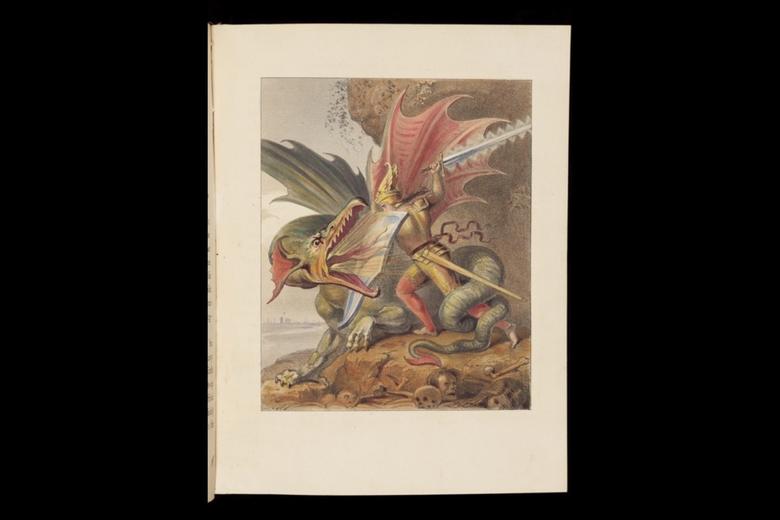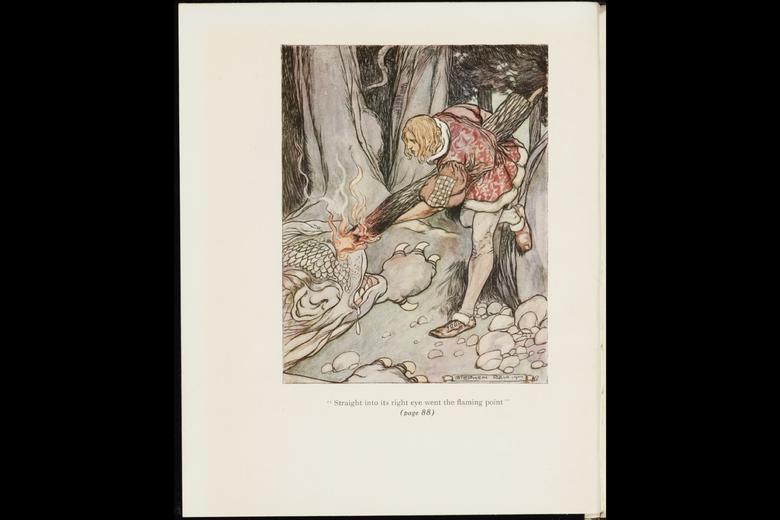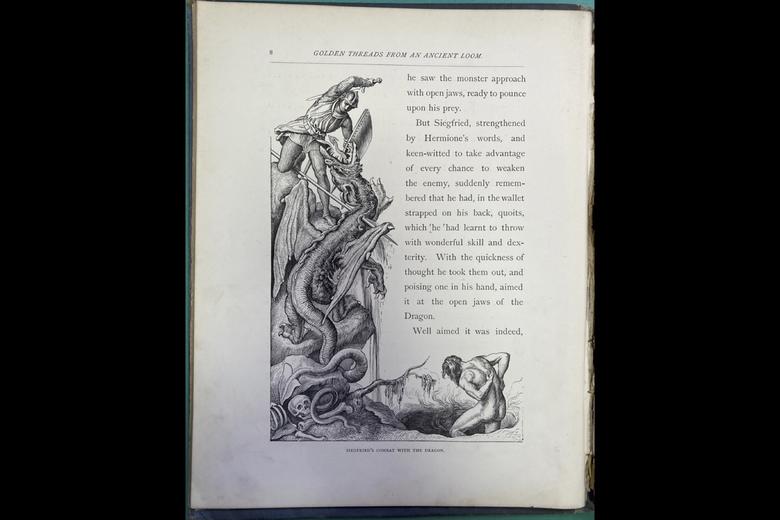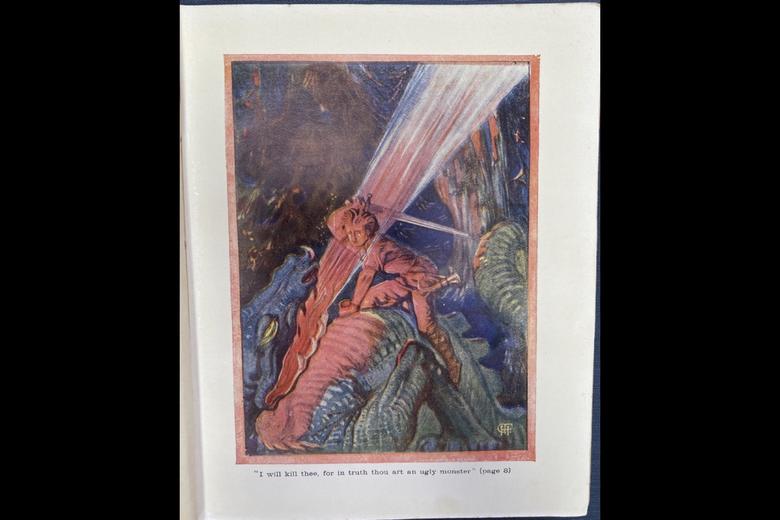Panel 3: Fantasy Violence
In this panel, we see the continuities between nineteenth-century medievalism and more recent medievalist fantasy material, particularly onscreen (e.g. Game of Thrones, The Hobbit, Merlin, Harry Potter). Siegfried’s fight with the dragon takes place entirely off-stage in the Nibelungenlied, and it is only mentioned once or twice in passing. It is, though, far more prominent in other traditions, and its appeal to illustrators, especially of children’s adaptations, needs no explanation.
These versions for younger readers frequently avoid adapting, or fully adapting, the second half of the narrative, with its focus on brutal vengeance. This has the effect of rebalancing the story into one focused entirely on Siegfried’s heroics, with Kriemhild simply functioning as a mild and beautiful love interest. Such adaptations also tend to bring in material which is omitted from, or played down in, the Nibelungenlied itself. While Siegfried’s violent death prevents such adaptations from culminating in a traditionally child-friendly happy ending, their emphasis on fantasy elements like the dragon give them a fairy-tale quality which we recognise today.
Siegfried fights the dragon
‘Straight into its right eye went the flaming point’: Dora Ford Madeley, 'The Heroic Life and Exploits of Siegfried the Dragon-Slayer. An Old Story of the North', illustrated by Stephen Reid, London, 1910.
‘Siegfried’s combat with the dragon’: Lydia Hands, 'Golden Threads from an Ancient Loom. Das Nibelunglied, adapted to the use of young readers', with fourteen wood engravings by Julius Schnorr, of Carolsfeld, London, 1880.
‘I will kill thee, for in truth thou art an ugly monster’: Mary MacGregor, 'Stories of Siegfried, told to the children', with pictures by Granville Fell, London, c. 1908.
‘The hero slew a dragon. He bathed in its blood: his skin grew horn-hard, so no weapon can cut him’
Nibelungenlied, stanza 100
Here we see four eye-catching depictions of Siegfried’s combat with the dragon, which is mentioned only in passing in the Nibelungenlied. All four are aimed at children, and in one, Siegfried appears close to the audience’s age – much like the heroes of many modern Young Adult fantasy books.
|
Exhibit 1:
Anonymous, The Heroic Life and Exploits of Siegfried the Dragon Slayer: An Old German Story, illustrated by Wilhelm Kaulbach, London, 1848.
|
Exhibit 2:
‘Straight into its right eye went the flaming point’ Dora Ford Madeley, The Heroic Life and Exploits of Siegfried the Dragon-Slayer. An Old Story of the North, illustrated by Stephen Reid, London, 1910. |
Exhibit 3:
‘Siegfried’s combat with the dragon’ Lydia Hands, Golden Threads from an Ancient Loom. Das Nibelunglied, adapted to the use of young readers with fourteen wood engravings by Julius Schnorr, of Carolsfeld, London, 1880. The woodcuts are a selection from Pfizer (1843).
|
Exhibit 4:
‘I will kill thee, for in truth thou art an ugly monster’ Mary MacGregor, Stories of Siegfried, told to the children, with pictures by Granville Fell, London, c. 1908.
|
|
The Bodleian Libraries, University of Oxford: Johnson d. 4468 |
The Bodleian Libraries, University of Oxford: 930 e.414. |
Private loan |
Private loan |






